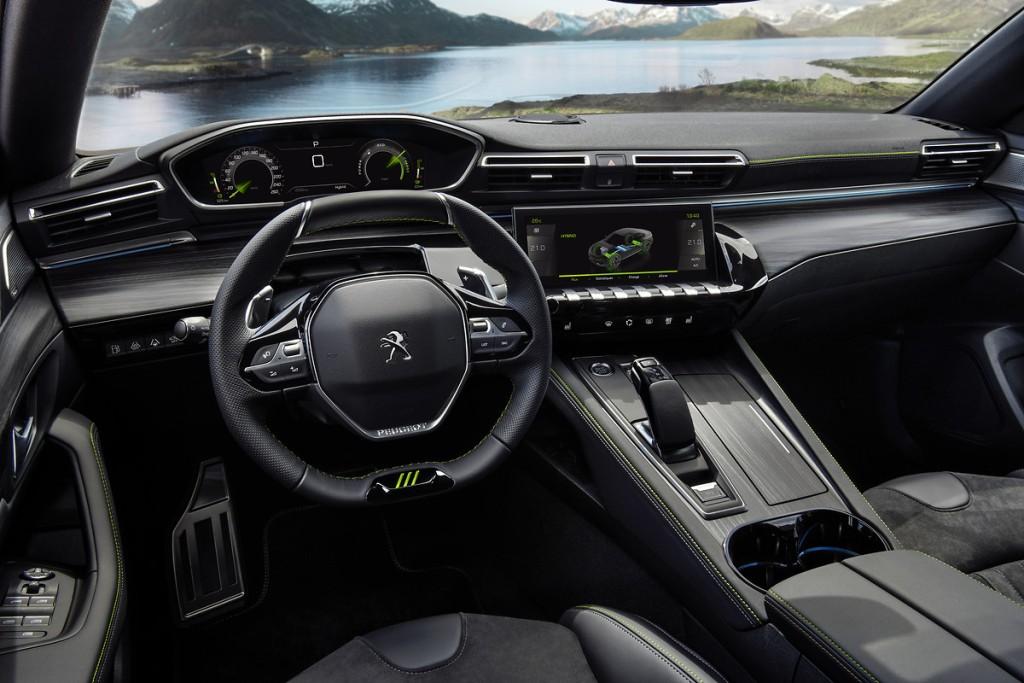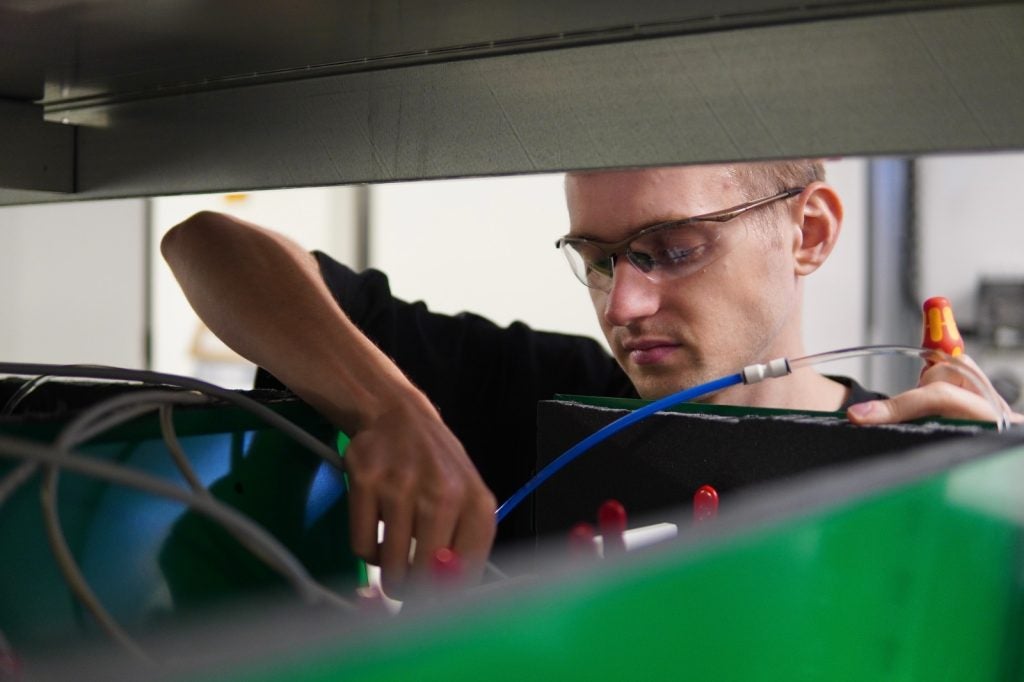
In the European market, the traditional D-segment saloon has been stagnant for a number of years. Under pressure from a range of customer preferences and designs, especially from the SUV market, the large saloon now only finds favour through offering wider variety and adopting a more pronounced identity. Ford’s recent decision to phase out Mondeo model production in early 2022, with no direct replacement in prospect, further reflects changes in the make-up of the European passenger car market.
It was against this backdrop that Peugeot wished to move away from the conventional boot-lid, four-door shape and towards a five-door fastback coupé-saloon.
Enter stage door left, the second-generation Peugeot 508 saloon. The main differences, states the French carmaker, its structure is more compact and height reduced compared to the previous model. Pierre-Paul Mattei, design director for the 508, says that to achieve such proportions when the length had been reduced by eight centimetres compared to the previous generation, his team moved the glazing support back to give the car a larger bonnet. Then there’s the frameless-door technology, which enabled them to reduce the vehicle’s height in relation to the car’s rivals in the segment. The car’s height is 6 cm lower than the previous model.
Inside story
The large saloon cabin is cloaked in a rich mix of materials, including full-grain leather, (on the GT version) touches of brushed chrome, large expanses of carbon or cloth decoration and plenty of hi-tech equipment. Its swept back windscreen blends into a sharply raked roofline. The powered and heated driver and front passenger seats incorporate a massage function.
Other powered comfort and convenience features include the tailgate, operated via a button on the dash, inside the boot lid or key fob. The upmarket textiles cover the door-card inserts, headliner, windscreen pillars and dashboard inlay. A central front armrest with butterfly-wing opening and illuminated storage compartment is tucked behind the centre console. There are also powered and heated wing mirrors, front windscreen wipers with ‘magic wash’ cleaning system, rear centre console ventilation system, powered boot lid, and panoramic roof.
How well do you really know your competitors?
Access the most comprehensive Company Profiles on the market, powered by GlobalData. Save hours of research. Gain competitive edge.

Thank you!
Your download email will arrive shortly
Not ready to buy yet? Download a free sample
We are confident about the unique quality of our Company Profiles. However, we want you to make the most beneficial decision for your business, so we offer a free sample that you can download by submitting the below form
By GlobalDataHead room in the back is somewhat limited due to the sloping roof line. Further back, the boot space provides a capacity of 487 litres with the 60/40 back seats in the upright position; 1,537 litres with rear seats folded flat. Continuing the space theme, cubby holes are also wide, deep and plentiful. The two front door pockets are flock-lined to stop loose items from rattling around.
i-Cockpit
The 508 is equipped with the carmaker’s i-Cockpit. Making its first appearance on the 208, it has been rolled out on a number of other models, including the 308, 2008, 3008 and 5008.
The i-Cockpit comprises four elements: a small steering wheel, head-up instrumentation, high centre console and touchscreen. And it all makes perfect sense, providing an insulated and cocooned feel to the cockpit.
The small-diameter steering wheel has been redesigned with two flats to make it easier to grip and provide the driver with improved visibility and legroom. While you can easily see the instrument cluster over the steering wheel – rather than peering through it – it does require a little seat adjustment. It also requires less steering effort when parking and manoeuvring around corners in town.
The reconfigurable 12.3-inch instrument cluster – positioned directly in the driver’s line of sight and above the sports steering wheel – offers five different display modes, controlled from a button on the steering wheel. The read-outs are clear and crisp.
Positioned on the raised centre console is an eight-inch tablet-style touchscreen that is equipped with capacitive technology and angled toward the driver. The touchscreen displays the usual vehicle information – such as trip data and fuel economy – and images from the rearview parking camera.
Beneath the touchscreen is a row of six chrome-plated toggle piano keys to control radio, HVAC (subsequently using cabin temperature sliders on the touchscreen), sat-nav, vehicle parameters and phone and mobile applications.
Another button – ‘Amplify’ – on the centre console can vary the brightness of the ambient lighting and the colour of the screens, adjust the sound settings, seat massage function and fragrance diffuser.
In addition, two environment ambiances are offered, namely an atmospheric ‘Boost’ focused on an energised driving experience and ‘Relax’ for a more tranquil mood. The Boost theme is aimed at a dynamic driving style while the Relax is for gentler driving. Three fragrances are also on offer, namely the ‘Cosmic Cuir’ (described by the automaker as “a vibrant and sensual fragrance, and a genuine olfactive signature of the brand”); ‘Aerodrive’: default setting for the ‘Boost’; and ‘Harmony Wood’: default setting for the ‘Relax’.
On the connectivity front, all versions offer phone mirroring, smartphone recharging pad and 3D navigation.
Voice control is operated via a button on the steering wheel. Voice commands are rather limited but seemed to work well, all things considered. Another button on the dash opens and closes the powered liftgate. This can also be operated by waving your foot beneath the rear bumper. There is no shortage of USB sockets to power up mobile devices (two in the front and two in the back).
Driver assistance
The 508 comes equipped with a number of advanced driver assistance system (ADAS) technologies as standard, including: active lane departure warning; driver attention warning; automatic adaptive headlamp main-beam; speed limit sign recognition and recommendation; adaptive cruise control with stop function (automatic gearboxes) and active blind-spot monitoring. For manoeuvring around towns and cities, Visio Park (360° all-around vision) and Park Assist do the job.
Night vision
It is not often that we come across cars with night vision. So it was a pleasant surprise to see that the 508 has this on offer (for an extra £1,300).
Statistics indicate that around 30 per cent of severe road accidents occur at night, although less than 30 per cent of all journeys are undertaken during night time. Night vision systems enable the driver to see objects beyond the range of the headlights at night or in poor visibility conditions.
Night vision can help improve driving safety by enhancing the driver’s ability to detect potentially dangerous situations beyond the range of the headlamps. During night-time driving, when a disproportionate number of collisions occur, certain situations such as a person changing a tyre on the side of the road, or an animal in the roadway, may not be visible with the naked eye until it is too late.
The 508 uses an infrared camera to detect people or animals in front of the vehicle at night or in low-visibility conditions. The system can detect objects within a 250 metre range, beyond the headlights’ scope and present on a head-up display unit.
Lightweighting
Explaining the technical challenges faced in designing the car, Pascal Delabarre, Project Director for the 508, said: “In terms of metal fitting, we introduced a technique for welding body parts that was strengthened with structural adhesive. Certain premium carmakers use this. The method reinforced the body’s rigidity and ensured better acoustic insulation. We also had to systematically shed needless weight. By taking this approach, we got rid of 70 kilos from the car. This was especially challenging due to the heaviness of certain equipment, such as the tailgate motor and the frameless doors. This required radical solutions, for example hot metal stamping and producing the boot and front wings in aluminium and the tailgate in thermoplastic.”
To ensure good acoustic insulation with frameless doors, the carmaker worked closely with its suppliers. “From the outset of the project, we chose to work with the best suppliers who truly master their technology,” added Delabarre. “For example, SaarGummi for the seals and Inteva [Products] for the window control. These suppliers offer real expertise, recognised by German premium automakers. Next, through the strengthened body structure, we ensured greater rigidity and therefore fewer restrictions on the doors and glazing. Lastly, we thickened the glazing by 1 mm in relation to standard thickness. Absolutely all these features can be found, for example, on an Audi A5 Sportback.”
On the road
Out and about in a pearlescent black GT hybrid this week, the ride felt smooth and forgiving along country roads thanks to its active suspension system. This attractive and entertaining car also felt comfortable and relaxed with few shortcomings. Its plush, far from boring, interior is undeniably well packaged and spacious with some useful infotainment and connectivity features. The i-Cockpit control layout is pleasing on the eye while the infotainment shortcut piano keys make navigating through the various touchscreen menus feel like a breeze. It is also quiet thanks to some special attention to acoustic insulation and glazing. The hybrid 508 was introduced in the second quarter of 2019. It is assembled at the carmaker’s Mulhouse plant in France, while the French sites of Trémery and Douvrin provide the powertrain. Rivals executive models include the Vauxhall Insignia and VW Arteon.




